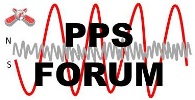Hello, My name is Alexandre. I'm from France
After playing long hours with virtual pinball i have the idea to manufacture my own pinball machine from scratch. After studying the project and many discussion with severals real pinball players, I initially preferred to recover a very old pinball playflied close to being scrapped in order to give it life again and to make a new operational pinball machine.
The old playfield that i use came from a « BENHUR » pinball machine that was manufactured during the years 1977 to 1979 by a French compagny (STALL). This pinball was manufactured at only 467 units !
The first task that i had was to clean the playfield, to deoxidize the many mettalic elements and electrical contacts used to detect the passage of the ball.
The second step consisted in replacing the lamps used to illuminate the playfield by white LEDs which are brighter and above all which consume much less.
At that time, i had to choose a microcontrolled solution to manage the pinball machine. It is naturally towards the arduino that i has turned because of their simplicity of use and their low cost.
I has therefore to replace the lamps present under the inserts of the flipper with addressable RGB strip. He cut off all segments of the strip before disseminating them on the playfield and connecting them again to each other. This strip use leds with an integrated APPA102 controller. By exploiting a library dedicated to the arduino, i very easily developed a program able to independently control each led of the flipper in order to be able to choose its color and its type of display (fixed, extinguished or blinking).
The next step was to be able to retrieve informations from the various sensors and targets of the playfield in order to know what the ball does during the games. To do this i actually used a second arduino board dedicated to this task. This technical solution has been chosen so that i do not have to develop a multitasking program. The concern in managing a pinball is that it is necessary that the microcontroller is always able to detect what the ball does (even when the microcontroller sends information to drive the leds, play a sound or display the scores ). So it is necessary to be able to detect several contacts simultaneously (which can be the case when the ball touch two close drop targets or during the multiball phases). In this case, it is important that the microcontroler do not loose informations.
In order to be certain of this, i actually used 3 arduino on his pinball machine. The first board (an arduino mega-2560) deals almost exclusively with the management of the ball and the rules of the game. In case of detection it is monopolized a very short time during which it sends (via serial links) orders to the two other boards (UNO328 and mega-2560), which will take care of displaying the scores and manage the display of the leds under the inserts.
i admits that it would have been possible to use only two arduino boards. But i'm looking to realize a second flipper much more complex in which it will be necessary to use three arduino boards (that's why he wanted to directly use this configuration).
The third arduino board has been allocated to the management of 2 led matrix (ulink in serie), which make it possible to obtain a surface of display of 48 x 16 leds on which the pinball displays scores as well as various animations.
The animations on the led matrix were realized on a program developed on PC, which is able to compact several JPEG pictures and to store them on files. These files were then recorded on a microSD card that the arduino mega-2560 is able to read in order to play animations on the led matrix. Once again the availability of the many libraries dedicated to the management of the led matrix and microSD cards has greatly simplified the task of the maker.
The penultimate step consisted of being able to control the solenoid of the flippers, of the bumper, kickers and drop targets. For this i used some triac and optocoupler to avoid any interference between the +5 V of the arduino and the 37 VAC used for the solenoid !
The last step was to reproduce the rules of the game of the original pinball (adding it however some additional possibilities such as animations on the led matrix or even sound effects and music via a small board that reproduce MP3 files).
At this date this pinball is totaly finish (the only thing that is missing is the cabinet). In fact i this pinball as a prototype in order to have gained enough experience to make a second totally personal pinball machine (mean 100 % from scratch).
Check out this video to see the different stages of pinball design as well as the pinball in action (at the end of the video) :
You are not allowed to view links.
Register or
Login This web site also details all stages of manufacturing :
You are not allowed to view links.
Register or
Login|mainPage
The web site and the video are in French ... but as pinball and arduino are universal ... This should not be a big problems for you !



